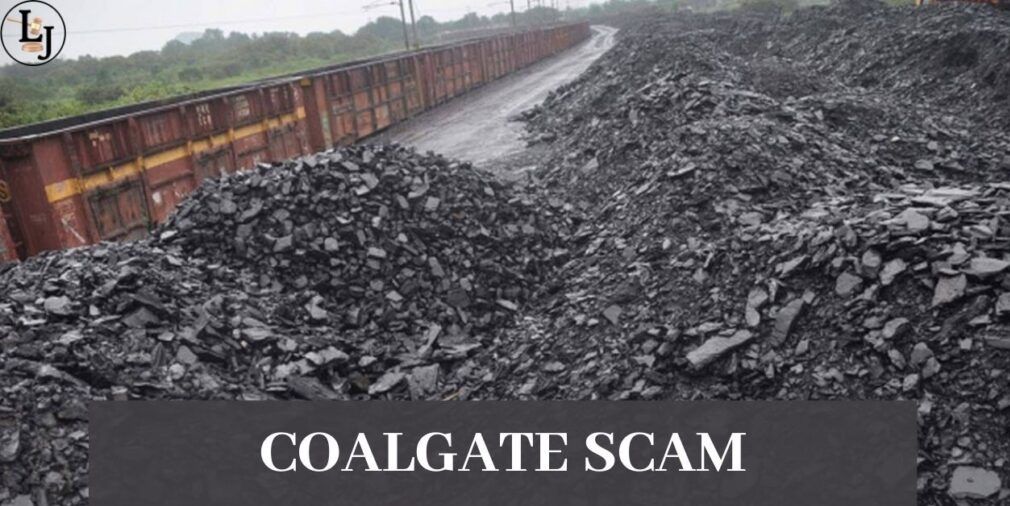Abstract
The Coalgate scam, unveiled in 2012, is a landmark case in India’s battle against corruption. This scandal, involving the non-transparent allocation of coal blocks to public and private enterprises, resulted in significant financial losses for the Indian exchequer. This article provides a detailed examination of the origins, development, legal proceedings, and outcomes of the Coalgate scam, incorporating legal jargon, case laws, and proofs found during investigations. The analysis aims to highlight the implications of the scam on India’s legal and policy framework.
Introduction
The Coalgate scam, one of the largest corruption scandals in India, surfaced in 2012 and revolved around the allocation of coal blocks to various companies without a transparent bidding process. The controversy underscored the need for robust governance and transparency in the management of natural resources. This article delves into the origins, uncovering, legal battles, and repercussions of the scam.
Historical Context
- Early Coal Allocation Practices
The foundation of the Coalgate scam was laid during the liberalization of India’s economy in the early 1990s. To meet the growing energy demands, the government allowed private participation in the coal sector, which was previously monopolized by state-owned enterprises like Coal India Limited (CIL). The Coal Mines (Nationalization) Act of 1973 had restricted coal mining to state-owned enterprises, except for captive mining by specific industries.
- Discretionary Allocation System
From 1993 to 2010, coal blocks were allocated to companies for captive use through a discretionary process. This allocation system was intended to ensure that industries with substantial coal requirements could secure their supplies. However, the lack of a competitive bidding mechanism led to allegations of favouritism and corruption.
The Scam Unfolds
- CAG Report and Initial Allegations
The controversy erupted in March 2012 when the Comptroller and Auditor General of India (CAG) released a draft report estimating a potential loss of approximately ₹10.7 lakh crore (around $170 billion) due to the allocation of coal blocks without competitive bidding. The final CAG report, tabled in Parliament in August 2012, revised the estimated loss to ₹1.86 lakh crore (around $28 billion). The report highlighted that 57 coal blocks were allocated to private companies between 2004 and 2009, leading to substantial financial gains for the beneficiaries at the expense of the public exchequer.
- Key Findings of the CAG Report
The CAG report underscored several critical issues:
- Arbitrary Allocations: Coal blocks were allocated without a transparent and competitive bidding process, leading to arbitrary decisions that favoured certain companies.
- Undervaluation of Resources: The coal blocks were allotted at prices far below their market value, resulting in significant financial gains for the companies that received them.
- Lack of Monitoring: There was inadequate monitoring of the utilization of the allocated coal blocks, leading to inefficiencies and potential misuse.
- Impact on Government Revenue: The non-competitive allocations deprived the government of substantial revenue that could have been generated through proper bidding.
Key Players and Involvement
- Political Figures
Several prominent political figures were implicated in the Coalgate scam:
- Manmohan Singh: The former Prime Minister, who also held the coal portfolio during the crucial allocation period, faced criticism and legal scrutiny. Although Singh maintained that the allocations were made to ensure energy security and industrial growth, questions were raised about the transparency and fairness of the process.
- Sriprakash Jaiswal: The then Coal Minister, along with other senior officials in the Ministry of Coal, was accused of facilitating the arbitrary allocation of coal blocks.
- State Chief Ministers: The chief ministers of several coal-rich states were also implicated in the scandal, accused of exerting undue influence on the allocation process.
Corporate Entities
Several major corporate entities benefited from the controversial coal block allocations:
- Jindal Steel and Power Ltd: Owned by Naveen Jindal, the company received several coal blocks, leading to allegations of undue favouritism.
- Tata Steel: Another major beneficiary, Tata Steel, was accused of securing coal blocks at prices far below their market value.
- Hindalco Industries: Part of the Aditya Birla Group, Hindalco was also implicated in the scandal for allegedly receiving favourable treatment in the allocation process.
Legal Proceedings and Investigations
- Role of the CBI
The Central Bureau of Investigation (CBI) played a pivotal role in investigating the Coalgate scam. In June 2012, following a directive from the Central Vigilance Commission (CVC), the CBI registered multiple FIRs against unknown officials of the Ministry of Coal, companies, and other individuals involved in the coal block allocations.
- Supreme Court’s Landmark Judgment
In a landmark judgment delivered in September 2014, the Supreme Court of India cancelled 214 out of 218 coal block allocations made since 1993. The court ruled that the allocations were arbitrary, lacked transparency, and were not in accordance with established norms and procedures. This decision was based on the findings of the CAG report and the subsequent investigations by the CBI.
Key Convictions and Acquittals
Several high-profile individuals faced charges of criminal conspiracy, corruption, and cheating:
- H.C. Gupta: The former Coal Secretary, along with two other senior officials, was convicted and sentenced to prison terms for their role in the scam. Gupta was found guilty of facilitating the arbitrary allocation of coal blocks and failing to uphold his duty as a public servant.
- Corporate Executives: Senior executives from various companies, including Jindal Steel and Power Ltd, Hindalco, and others, were charged with conspiracy and cheating. Some executives were convicted, while others managed to secure acquittals due to insufficient evidence.
- Political Figures: Although several politicians, including former Prime Minister Manmohan Singh, were investigated, many were acquitted due to lack of conclusive evidence linking them directly to the scam.
Case Laws Referenced
The Coalgate scam case referenced several significant legal precedents and case laws:
- Bharat Sanchar Nigam Ltd. v. Tata Communications Ltd.: This case highlighted the importance of transparency and competitive bidding in government contracts, reinforcing the principles applied in the Coalgate scam judgment.
- State of Maharashtra v. Praful B. Desai: This case was referenced to underline the need for fair investigation procedures and the role of the judiciary in upholding justice.
- Coal India Ltd. v. Saroj Kumar Mishra: This case emphasized the regulatory frameworks governing coal allocations and the necessity for adherence to established guidelines and norms.
Impact and Reforms
Policy Overhaul
The Coalgate scam exposed significant flaws in India’s coal allocation policy, prompting the government to initiate substantial reforms:
- Competitive Bidding: The Coal Mines (Special Provisions) Act, 2015, was enacted to ensure that all future allocations of coal blocks were conducted through a transparent and competitive bidding process. This marked a significant shift from the discretionary allocation system and aimed to restore public confidence in the coal sector.
- Transparent Procedures: The new policy mandated that all coal block allocations be carried out through electronic auctions, ensuring transparency and minimizing the scope for corruption.
Institutional Strengthening
The scam underscored the need for robust institutional frameworks to oversee resource allocations and prevent future irregularities:
- Independent Regulatory Bodies: The establishment of independent regulatory bodies, such as the Coal Controller’s Organization, was proposed to oversee the allocation and utilization of coal blocks.
- Stricter Auditing Mechanisms: Enhanced auditing and monitoring mechanisms were introduced to ensure that the allocated coal blocks were being used for their intended purposes and to detect any deviations or misuse promptly.
Economic Repercussions
The cancellation of coal block allocations had far-reaching economic implications:
- Disruption of Operations: The cancellation disrupted the operations of several industries, leading to financial losses, project delays, and a temporary shortage of coal supplies.
- Restoration of Investor Confidence: The subsequent auctioning of coal blocks through a competitive bidding process aimed to restore investor confidence and ensure fair play in the allocation of resources.
Broader Implications and Lessons Learned
The Coalgate scam highlighted the critical need for good governance and accountability in the management of natural resources:
- Transparency in Resource Allocation: The scandal underscored the importance of transparent procedures and competitive bidding in the allocation of natural resources to prevent favouritism and corruption.
- Strengthening Institutional Frameworks: It also emphasized the need for robust institutional frameworks and independent regulatory bodies to oversee resource allocations and ensure compliance with established norms.
Legal and Judicial Oversight
The role of the judiciary in addressing corruption and ensuring accountability was pivotal in the Coalgate case:
- Judicial Activism: The Supreme Court’s proactive stance in cancelling the arbitrary coal block allocations and directing the CBI to investigate the matter was a testament to the importance of judicial oversight in upholding the rule of law.
- Precedent for Future Cases: The landmark judgment set a significant precedent for future cases involving the allocation of natural resources, reinforcing the need for transparency and accountability.
Conclusion
The Coalgate scam remains a significant chapter in India’s ongoing battle against corruption. The scandal exposed the deep-rooted issues in the allocation of natural resources and highlighted the urgent need for comprehensive policy and regulatory reforms. While the legal and policy measures initiated in the aftermath of the scam have aimed to rectify systemic flaws, the case underscores the importance of transparency, accountability, and integrity in public administration. The lessons learned from the Coalgate scam continue to shape India’s approach to resource management and governance, ensuring that such large-scale corruption is prevented in the future.
FAQs
Q: What was the Coalgate scam? A: The Coalgate scam involved the non-transparent allocation of coal blocks to various companies without competitive bidding, resulting in significant financial losses for the Indian exchequer.
Q: Who were the key figures implicated in the Coalgate scam? A: Key figures included former Prime Minister Manmohan Singh, then Coal Minister Sriprakash Jaiswal, several state chief ministers, and senior executives from companies like Jindal Steel and Power Ltd, Tata Steel, and Hindalco Industries.
Q: What were the findings of the CAG report on the Coalgate scam? A: The CAG report highlighted arbitrary allocations, undervaluation of resources, lack of monitoring, and significant revenue losses due to the non-competitive allocation process.
Q: What was the outcome of the Supreme Court’s judgment on the Coalgate scam? A: The Supreme Court cancelled 214 out of 218 coal block allocations made since 1993, citing arbitrariness and lack of transparency. This led to significant legal and economic repercussions.
Q: What reforms were introduced in the aftermath of the Coalgate scam? A: The government introduced the Coal Mines (Special Provisions) Act, 2015, ensuring competitive bidding for coal block allocations, along with enhanced auditing and monitoring mechanisms.
The Coalgate Scam: An In-Depth Analysis of India’s Coal Allocation Controversy
Author name: Nischal Singh, A student of Institute of Law and Research, Faridabad



